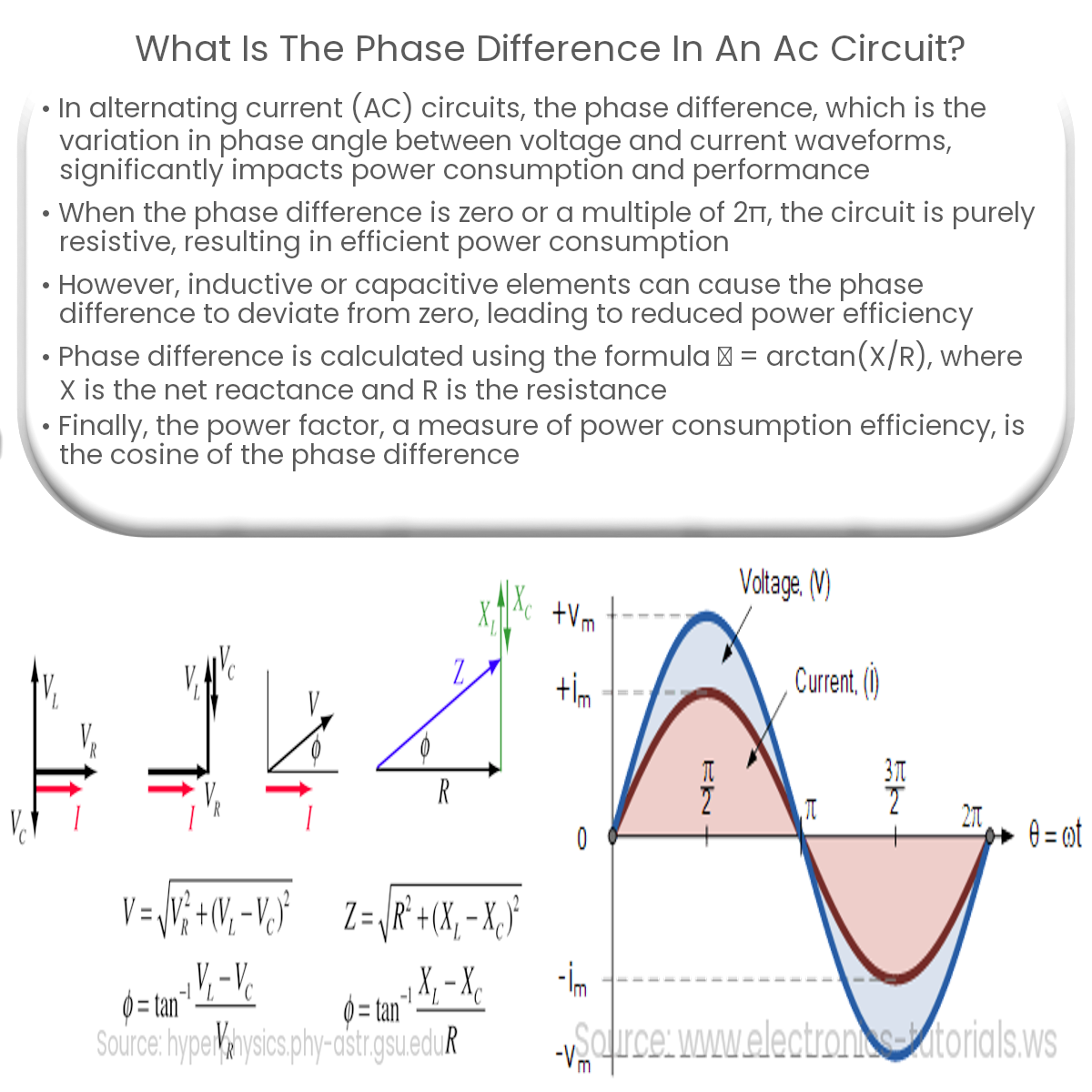Phase difference in an AC circuit refers to the angle between voltage and current waveforms, impacting power consumption and circuit performance.
Understanding Phase Difference in AC Circuits
In alternating current (AC) circuits, the phase difference is a crucial concept that plays a significant role in the behavior and analysis of the circuit. Phase difference, measured in degrees or radians, refers to the difference in phase angle between two sinusoidal waveforms, such as voltage and current, in an AC circuit.
Why Phase Difference Matters
Phase difference is important because it impacts the power consumption and performance of an AC circuit. When the phase difference is zero or a multiple of 2π, the circuit is purely resistive, and power is consumed efficiently. However, in the presence of inductive or capacitive elements, the phase difference between the voltage and current waveforms deviates from zero, resulting in reduced power efficiency.
Inductive and Capacitive Reactance
In AC circuits with inductors and capacitors, phase difference arises due to the properties of these components. Inductive reactance (Xₗ) is the opposition offered by an inductor to the flow of AC, causing the current waveform to lag behind the voltage waveform. On the other hand, capacitive reactance (Xc) is the opposition offered by a capacitor to the flow of AC, causing the current waveform to lead the voltage waveform.
Calculating Phase Difference
To calculate the phase difference between voltage and current waveforms in an AC circuit, first determine the impedance (Z) of the circuit, which is a complex quantity encompassing both resistance (R) and net reactance (X). The phase difference (Φ) can then be found using the following formula:
Φ = arctan(X/R)
where Φ is the phase difference, X is the net reactance (Xₗ – Xc), and R is the resistance. The result is expressed in radians or degrees, depending on the chosen unit for the arctan function.
Power Factor
Another important concept related to the phase difference is the power factor (PF), which is a measure of how effectively an AC circuit consumes power. The power factor is the cosine of the phase difference (cos(Φ)) and ranges from -1 to 1. A power factor of 1 indicates that the circuit is purely resistive and consumes power efficiently, while a power factor of 0 indicates a purely reactive circuit that does not consume any real power.


